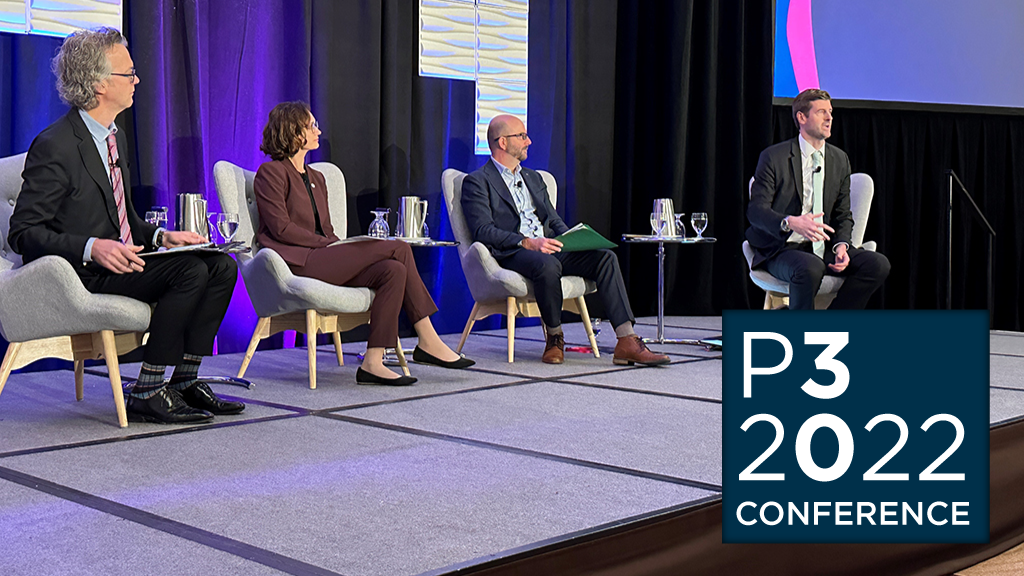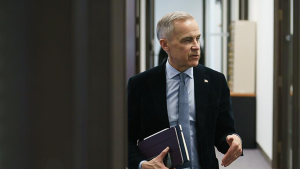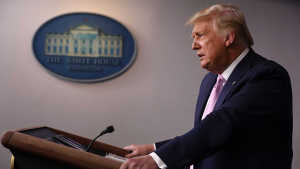For P3 and DBFM projects to survive current and coming conditions, both owners and contractors will have to adapt, according to industry experts.
Four public-private partnership (P3) project veterans came together at the COVID-19 Impacts on Risk Structures Within the P3 Model breakout session held Nov. 22 at the Canadian Council for Public-Private Partnerships (CCPPP) annual P3 conference held in downtown Toronto.
Fengate Asset Management director of infrastructure investments Jensen Clarke moderated a panel comprised of PCL district construction risk manager Jason Andraza, Pomerleau vice-president of pre-construction, apex and Canadian building Magda Sabat and Greg Southam, a partner at the Davies legal firm.
“There’s only a few generals who are willing to take on the risk associated with a design-build-finance-maintain (DBFM) model,” Andraza said. “These are high-risk projects and their complexity is top shelf. The contracts are challenging and (with) the market conditions that are out there, we’re in a busy market.
“These projects demand top-tier performance. You get into a P3 (project) and you need to have an ‘A’ team with you. So we’re seeing there’s a heightened appreciation and strength in the level of general contractors that are sticking through the business,” he added.
Sabat said as the industry emerges from the pandemic it is still recovering from the “cumulative effects of unknown events.”
“The P3 model for all its benefits relies on predictability and stability in the market and with the unknown spikes and pricing fluctuations that we’ve seen, the inflation we’re facing and a lack of skilled resources in the labour market, (all) that has been exacerbated by the pandemic as the impact on the projects that were already executed in fixed-price mode and in execution felt a huge negative impact through the pandemic,” she said.
Southam said as the industry has progressed through the pandemic, COVID-19 has been “baked into the documentation” but preparations must be made for future crises.
“Contractors are expected to price in the impacts of COVID and so that may work for the job requirements as they exist today onsite, but the problem is when does COVID-19 actually stop?” he asked.
“What we’re hearing from global health organizations is that we’re going to see more of these types of things over shorter periods of time than less of them, so we’ve got to get ahead of it.”
Southam added contractual models as a whole were not built to deal with both the size and term of application of the P3 model as seen in today’s market.
“Tenor and size has put a lot of pressure on the model. I think the progressive model has allowed us to focus a little and think about escalation issues, such as how does it get priced and what is the right balance in a hyper-sensitive market,” he said.
Clarke asked the panel how to prevent projects from being cancelled in the present risky environment. Sabat pointed out some projects are necessary regardless of present circumstances.
“The reality is the projects that have been cancelled, if they truly need to, will have to come back and they’ll just cost more in the future. Even if they stabilize, they’re not going to wind down,” she said.
“We still have a lot of work to do,” Southam added. “We’ve got to put a bit of dent in our infrastructure deficit as a country and in the North American infrastructure deficit but it’s tip of the iceberg stuff.
“We now have 20-some-odd years in this country of projects and what’s gone well and what hasn’t. I think we should not stick our heads in the sand and not pound on the same rock.”
Follow the author on Twitter @JOCFrey.











Recent Comments
comments for this post are closed